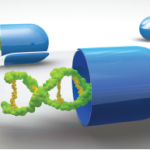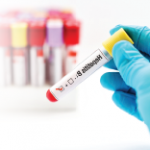From the guideline—Recommendation: For patients with clinical manifestations of deficiency of adenosine deaminase 2 (DADA2), we strongly recommend treatment with tumor necrosis factor [TNF] inhibitors over glucocorticoids alone.
Q: What led to the strong recommendation in the new guideline for TNF inhibitors in DADA2? And to follow up on that, who do you think we should be screening, and how do you recommend screening to find those people you’re going to treat with TNF inhibitors?
Dr. Springer: TNF inhibitors have become an important treatment for patients with DADA2 who have vasculitis features. Based on data from the NIH [National Institutes of Health], TNF inhibitors are especially effective at preventing recurrent strokes.9 TNF inhibitors aren’t the first treatment we reach for in primary PAN, but they can make a huge difference in patients with DADA2.
Who to screen is a more difficult question. There isn’t a consensus I know of. I think there are some clues in patients—anybody with a family history of PAN or PAN-like features, anybody who has had childhood onset or who has had neurologic involvement, like strokes—they’re the ones I would strongly consider for a diagnosis of DADA2.
I do think that childhood-onset PAN patients should be screened for DADA2. But it doesn’t make sense to screen every adult patient with PAN for DADA2. A study that looked at an adult primary PAN population through the Vasculitis Clinical Research Consortium (VCRC) cohort found a prevalence of only about 5% of patients who had ADA2 gene mutations and met criteria for DADA2.10
There are a couple of different ways to confirm the diagnosis and screen. One would be to check the genetic testing; testing for the ADA2 gene (formerly the CECR1 gene) is commercially available in immunodeficiency or periodic fever panels.
The other way is to check peripheral ADA2 levels; you can check the absolute levels or the enzyme activity. The only place I know of that is CLIA-certified to do this is Duke University School of Medicine, Durham, N.C. (Note: For information about ADA2 activity testing, contact [email protected].)
I think there’s going to be point-of-care testing, but that’s not available yet. To really confirm the diagnosis, I would probably get both the ADA2 gene testing and peripheral ADA2 levels. It is important to keep adults in mind, though. A lot of people think of DADA2 as just a childhood disease, but I have diagnosed several adults with DADA2.



